JAZZ HARP – A practical method
Interpreting a melody, knowing how to accompany, improvise, and make an arrangement are the goals of this method and are also the ingredients for playing along with other musicians in a more immediate and conscious way.
Based on the premise that the best method of learning is experience, this is intended to be a practical method for knowing how to untangle chord signatures and melodies from a generic score (with Anglo-Saxon notation), adaptable to all instruments. It is developed gradually and the theoretical aspect is always applied to practice and listening: with a wealth of exercises to be practiced in parallel with the theoretical part and 10 original pieces of progressive difficulty to apply the skills acquired. Of these 10 pieces, audio tracks (with harp, double bass and drums) and audio backing tracks to practice on (without the harp, with only double bass and drums) are available online.
“I play everything in C major, even if I have four pedals in flat or if I have two pedals in sharps…” so used to say ironically a dear friend of mine as well as an excellent harpist. This is because on the harp, once the pedalboard is set up, you can read the music without considering the alterations, as if precisely everything is in C major. Unlike other instruments, on the harp you can actually play without paying attention to the key in which you are playing.
In jazz this is not possible: harmonic awareness is one of the prerequisites. This method is aimed at those who already have a good technical command of the pedal harp and want to explore the world of jazz and improvisation, and more generally of modern harmony applied to the harp.
The harp in jazz and improvised musics has great potential: we are discovering this not only thanks to the many musicians now playing around the world, but also thanks to the technical development of electroacoustic harps. Knowing the history of the harp in jazz can be an incentive to discover or rediscover the infinite timbral, harmonic and melodic possibilities of our instrument. The numerous examples of listening suggestions are essential to better understand that everything written between these pages has practical application between our 47 strings.
And now put the method on the music stand and have a good study!




